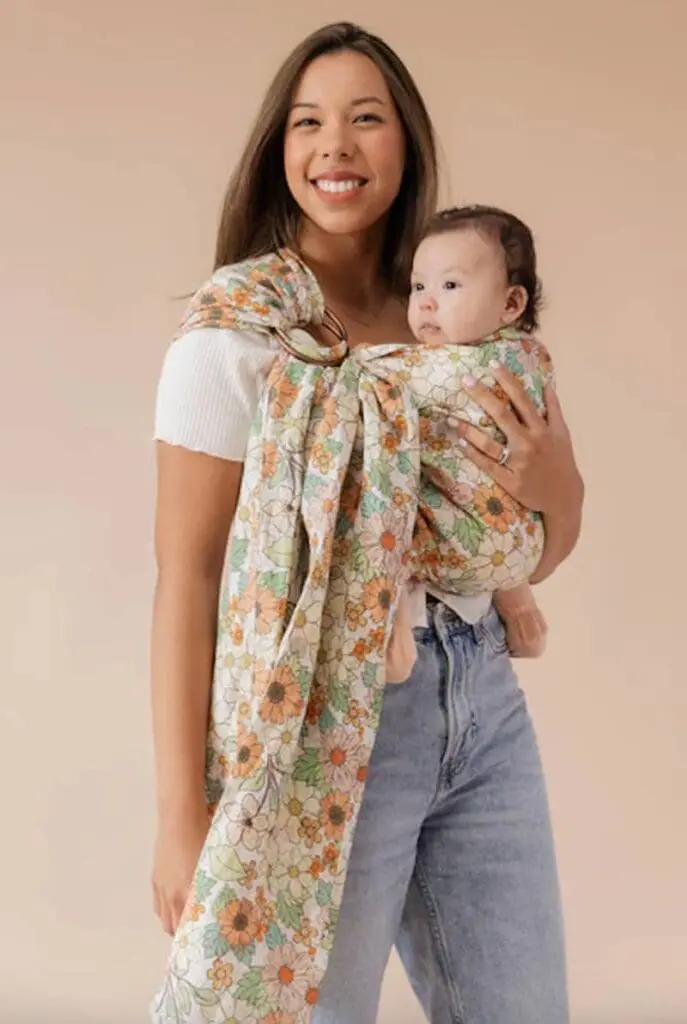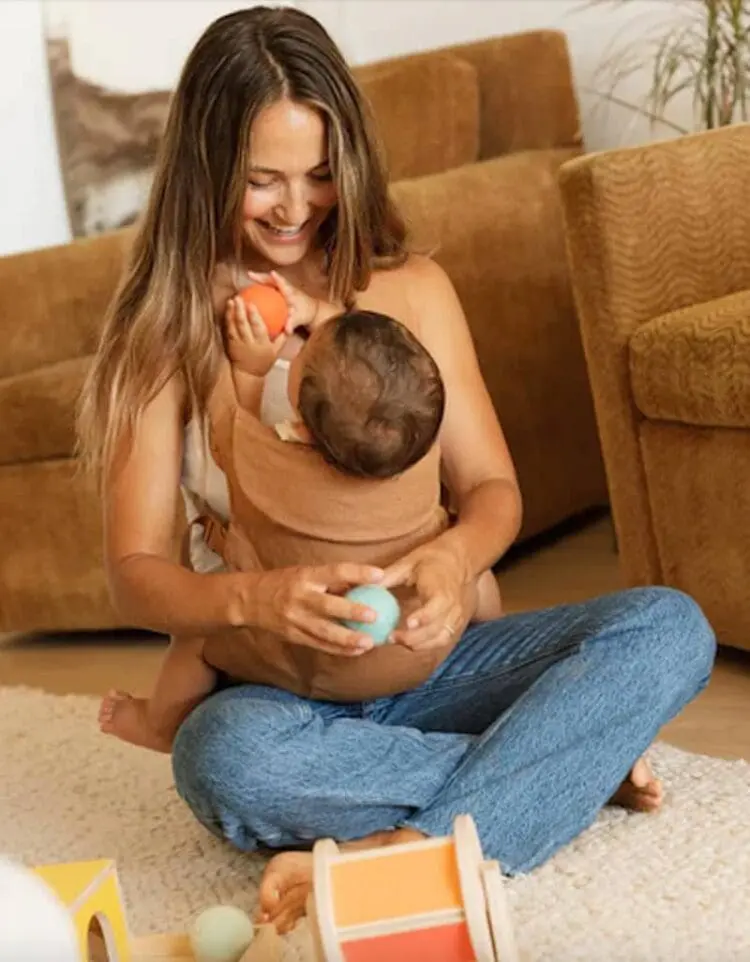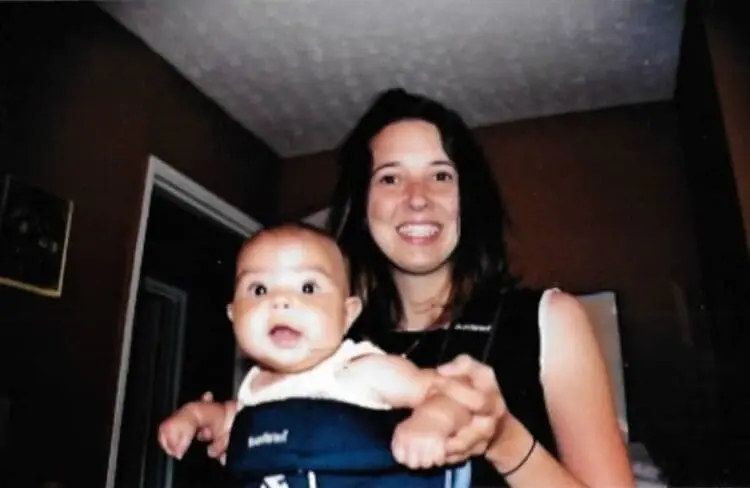When it comes to transporting your little one, choosing the right baby carrier for newborns is crucial for both comfort and convenience. Newborns require support for their head and neck, along with a comfortable, snug environment that mimics the closeness of being in the womb. Several different types of baby carriers are specifically designed to suit these needs, ranging from soft-structured carriers to wraps and slings. Each style caters to different preferences and lifestyles, so understanding the nuances between them will help you make an informed choice that benefits both you and your baby.
I practiced babywearing with both of my babies. I first started using a baby carrier so I could take a walk without pushing the stroller and just have my baby close. Then I noticed how much my babies liked it. If I was trying to get something done in the kitchen they would cry about being set down but they would be perfectly happy in the baby carrier. I quickly realized they liked being near me in the baby carrier and they liked watching what I was doing for a bit before falling off to sleep. I believe there are many benefits of babywearing and include a baby carrier in my baby registry must haves.
The journey of picking the best baby carrier involves considering factors such as ease of use, material comfort, and ergonomic support. For parents seeking a blend of convenience and support, options like a structured buckle baby carrier might be appealing. These carriers typically offer adjustable straps and padded shoulder support, making them a versatile choice for babies of various sizes. Others may prefer the simplicity and custom fit of a sling or wrap, which allows for direct skin-to-skin contact that newborns find soothing.
Key Takeaways
- A well-chosen baby carrier ensures newborn comfort and support.
- Varied carrier types cater to different parent and baby needs.
- Material comfort and ergonomic design are vital in selection of your type of baby carrier.
Types of Baby Carriers
When choosing a baby carrier, comfort, ergonomic design, and ease of use are paramount. The right choice grows with your baby, ensuring safe and snug positioning for newborns, infants, and even toddlers.
Wrap Carriers
Wrap carriers, made of stretchy wraps like cotton and linen, are a cozy option for you and your newborn. These infant carriers are versatile and allow a snug fit, but can have a steeper learning curve due to the wrapping technique involved.
- Pros: Highly adjustable; promotes bonding
- Cons: May be challenging to learn how to use effectively

Photo Credit: Ring Sling Baby Carrier From WILDBIRD
Ring Slings
Ring slings are simple, made typically from breathable linen or cotton. These baby slings are lightweight and easy to adjust, providing a comfortable quick-carry choice.
- Pros: Easy to put on; facilitates breastfeeding
- Cons: Uneven weight distribution may be uncomfortable for longer wear periods
Soft Structured Carriers
With soft structured carriers, you get ergonomic support, often with extra padding for comfort and adjustable waist belts. These carriers often include features like mesh fabric for breathability and hoods for protection. This was my favorite kind of baby carrier because they are the most supportive and they are simple and intuitive to use.
- Pros: Great back support; versatile carrying positions
- Cons: Can be bulkier and more expensive

Soft Structured Carrier: The Aerial Buckle Baby Carrier From WILDBIRD
Specialty Carriers
Specialty carriers focus on specific needs such as hip dysplasia prevention with a variety of special features like lumbar support and seat adjustments.
- Pros: Targeted support; innovative designs
- Cons: May not be as versatile for different carrying positions
Carrier Accessories
Accessories like fanny pack pouches or mesh panels can be added to carriers for extra functionality—storage for your essentials or increased airflow for your baby’s comfort.
- Pros: Increase usability and versatility
- Cons: May add extra cost
Safety and Maintenance
Ensuring that your carrier is machine washable and made from safe materials is crucial for easy care and peace of mind.
- Pros: Simplifies cleanliness; peace of mind
- Cons: Some materials may not be machine-washable
Health and Development Benefits
Carriers designed to prevent issues such as hip dysplasia are worth considering for your baby’s health. Look for ergonomic carriers that support natural hip positioning.
- Pros: Promotes healthy development
- Cons: Might be more expensive
Fashion and Lifestyle Choices
Fashion meets functionality with carriers available in various color options and materials that suit all styles, whether you’re going on a hike or a stroll around the block.
- Pros: Personal expression through style
- Cons: Style choices may not always align with the most practical features
Carrying Positions
The capability of facing in, facing out, hip, or back carry positions can impact your baby’s comfort and development positively. Choose a carrier that provides ergonomic support for your baby and fits your lifestyle. The International Hip Dysplasia Institute recommends inward-facing carrying for the first six-months of infancy to promote optimum hip development. While outward-facing may not be harmful, the inward-facing position is acknowledged as hip healthy.
- Pros: Adaptable as your baby grows
- Cons: Not all carriers offer all positions
There are so many different types of baby carriers and you may want to test a few to see which ones feel right to your and your baby. Lots of my friends loved sling carriers but I was definitely more comfortable with structured carriers so find what matches your preferences. I liked that my buckle carrier could be used in both the inward facing and forward facing positions.

Selecting the Best Baby Carrier
When choosing the best baby carrier for your newborn, prioritizing comfort, adaptability, and safety is essential. Specific carriers are designed to support your baby’s development and make daily life more convenient for you.
Comfort and Ergonomics
For both you and your baby, comfort is paramount. Look for carriers that offer ergonomic design to ensure natural positioning, which is vital for hip health and preventing issues like hip dysplasia. A good carrier should also have padded shoulder straps and lumbar support to reduce strain on your back. Some of the best baby carriers combine breathable materials with adjustable seating positions to cater to both your and your baby’s comfort.
Convenience and Adaptability
Select a carrier that can adapt to different situations. Convertible carriers that grow with your child from a newborn to a toddler provide the best value. Features like machine washability and easy learning curves benefit new parents significantly. For those who are often on the go, lightweight and compact designs make travel simpler. Extra features, such as storage for essentials, can also enhance convenience.
Safety and Health Considerations
Your newborn’s safety is non-negotiable. All carriers should meet current safety standards and provide adequate head and neck support for newborns. Additionally, ensure that the carrier is made from non-toxic materials. It’s also critical to choose designs recognized for promoting healthy hip development. Adjustable carriers are ideal as they allow for a snug and safe babywearing experience, minimizing risks and ensuring peace of mind.
Conclusion
Baby wearing my two children taught me that there is so much more to wearing your baby than simply getting them from A to B. It has opened my eyes up to a whole new way of caring for my kids, while also caring for myself. Through my baby-wearing adventures, I discovered a multitude of hidden benefits of babywearing. Maybe it’s no secret, but one of the biggest benefits of babywearing is bonding with your baby through extra skin time and extra snuggle time. I also found that babywearing definitely increased my productivity. I could multi-task while tending to my baby’s needs and also getting work and errands completed.
Furthermore and more brands are taking fashion into consideration in the designs, fabrics and colors of carrier types. This means that wearing your baby can now even be a fashion statement! What different types of baby carriers appeal to you the most and why? Share the right carrier for your baby on social media @familyfocusblog!
Related Posts:
Guide to Developing an Effective Newborn Sleep Schedule

Riki Krisdianto says
Thanks for explaining the differences and for sharing your personal favorite type of carrier. I have heard that buckle carriers are ideal for older babies and baby sling is nice for newborns. Backpack carriers are best for toddlers.
Neuro says
Thanks so much for explaining about different carriers. I was totally confused and now I understand the types of carriers much better.
Sylvia says
I like different designs that feature a mesh body panel. It is a great option for allowing excess heat to escape and bonding at the same time:)
Carl says
Thank you for sharing such an nice information on baby carriers. Its very helpful.